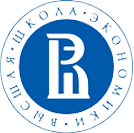AFA launched the project in June 2019. Last December the Agency published the first summary of its results, based on the analysis of contributions to an online survey provided by 171 anti-corruption authorities (ACAs) from 114 countries. Last May AFA issued its detailed analysis. The main objective of the project is to gather, centralize, and disseminate information about the various anti-corruption institutions established worldwide. Another objective of the study is to analyse specific components of the overall system of anti-corruption measures in the countries that participated in the survey: the extent of the practice to embed in legislation the obligation to adopt codes of conduct and carry out the assessment of corruption risks in bodies and organizations. In addition, the participants of the study had assessed the prospects of international cooperation between ACAs, existing problems and key tendencies of such interaction.
Characteristics of anti-corruption authorities
In spite of the fact that the UN Convention against Corruption and other international treaties do not prescribe a universally accepted model for dividing functions among public authorities, the authors of the study highlight that in a clear majority of respondent countries (84 out of 114, i.e. 74%) there is a single anti-corruption authority. In 16 respondent countries (14%) anti-corruption functions appear to be split between two distinct entities and in 14 remaining countries (12%) multiple agencies (3 or more) are in charge of combating and preventing corruption.
108 out of 171 of respondent ACAs (63%) are authorized to conduct investigations and/or criminal proceedings: 102 of them can conduct these investigations and criminal proceedings against natural persons, meanwhile legal persons also fall within the scope of 79 authorities. The remaining 63 ACAs are entrusted with preventive, educational and informative missions.
82 out of 171 ACAs (48%) have sanction mechanisms, and these mechanisms are mainly administrative (in 56 authorities out of 82). In contrast, penal, civil or other sanctions are less common (38, 13 and 12 ACAs respectively).
Most respondents (89%) reported that they are involved in the creation and execution of a national strategy on anti-corruption with 52% in the quality of lead organization and remaining 48% as a contributor.
The report pays attention also to the peculiarities of the implementation of functions regarding collection and processing of asset and/or interest declarations: according to the results of the survey, only 39% of respondent ACAs stated that they are in charge of managing asset and/or interest declarations of public officials. This might indicate low level of involvement of ACAs in the activities related to the disclosure of information (in such a case other bodies, for instance, supreme audit institutions or tax authorities may perform this function).
Legal provision to set anti-corruption standards
Three quarters of the respondents stated that their national legislation provides for the obligation to develop and adopt codes of conduct: in most cases it regards only the public sector (71%), meanwhile standards applicable to the private sector are rarely compulsory (17%).
In comparison with codes of conduct, risk mapping is not such a widespread requirement: just over half of respondents (56%) reported that this procedure is compulsory in their countries: 91 respondents pointed out that this obligation applies to the public sector, whilst 22 respondents informed that it was relevant for the private sector. These findings suggest that the drafting of codes of conduct is not necessarily based on a prior identification and assessment of corruption risks. However, the latter should constitute a basic component of the system of anti-corruption standards.
Besides, the survey reveals that, in a few cases, respondents from the same country give contradictory answers regarding national obligations. This could attest to a lack of common knowledge and/or interpretation of anti-corruption standards at the domestic level.
AFA’s field of analysis, namely the content and characteristics of the division of responsibilities for the prevention of and fight against corruption in different countries, seems to be particularly acute, considering the fact that at present there are few studies with such a broad geographical coverage: scholars generally focus on the characteristics of the bodies of a certain country or of a group of countries in the same region, and less common is the sample of countries based on other criteria such as the form of government or the administrative and territorial structure.
However, the approach to the study raises questions. In the first place, the methodology for selecting respondents remains unclear: according to the authors of the report, the list of ACAs that were invited to participate in the survey was based on the information of the On-line Directory of Competent National Authorities, developed by UNODC. However, as the researchers point out, several ACAs to which the survey was sent eventually did not reply, therefore they were not included in the sample of respondents. As a result, only 171 ACAs from 114 countries out of 323 ACAs from 193 countries, included in the UNODC Directory, participated in the study. As a consequence, the findings of the report are not always correct: for instance, the countries which are typical examples of the multi-agency approach, such as Russia and the United States, were identified as the States where there is a single anti-corruption authority merely on the grounds that only one body submitted answers to the survey. The research design appears to be controversial as well: the survey circulated to the respondents contained only closed questions (except for the question about the prospects of international cooperation), and even if there was the option “Other”, the respondent could not specify what exactly he/she meant by selecting that answer. In our opinion, such an approach does not allow to go into necessary detail and grasp the variety of models used to distribute anti-corruption functions among different authorities. In order to get comprehensive understanding of the “characteristics and needs” of ACAs it would have been preferable to use open questions. At the same time, the inclusion of the questions about the general system of anti-corruption measures (codes of conduct and corruption risks assessment) does not appear fully justified. Rather, as the topic of the report suggests, the questions about the peculiarities of the division of anti-corruption functions at the national level would have been more appropriate. Such topics seem to constitute a subject for a separate study. Therefore the fact that 4 out of 8 substantive questions in the survey focus on their analysis considerably diminishes the relevance of the project.
*NCPA is an international initiative bringing together anti-corruption authorities from different countries to exchange technical information and best practices with a view to prevent corruption more effectively, and to promote a global culture of integrity. The NCPA Network was launched by AFA, the Italian National Anti-Corruption Authority (Autorità Nazionale Anticorruzione) and the Serbian Anti-Corruption Agency (Агенције за борбу против корупције) in 2007. At present, it has 24 participating ACAs.

